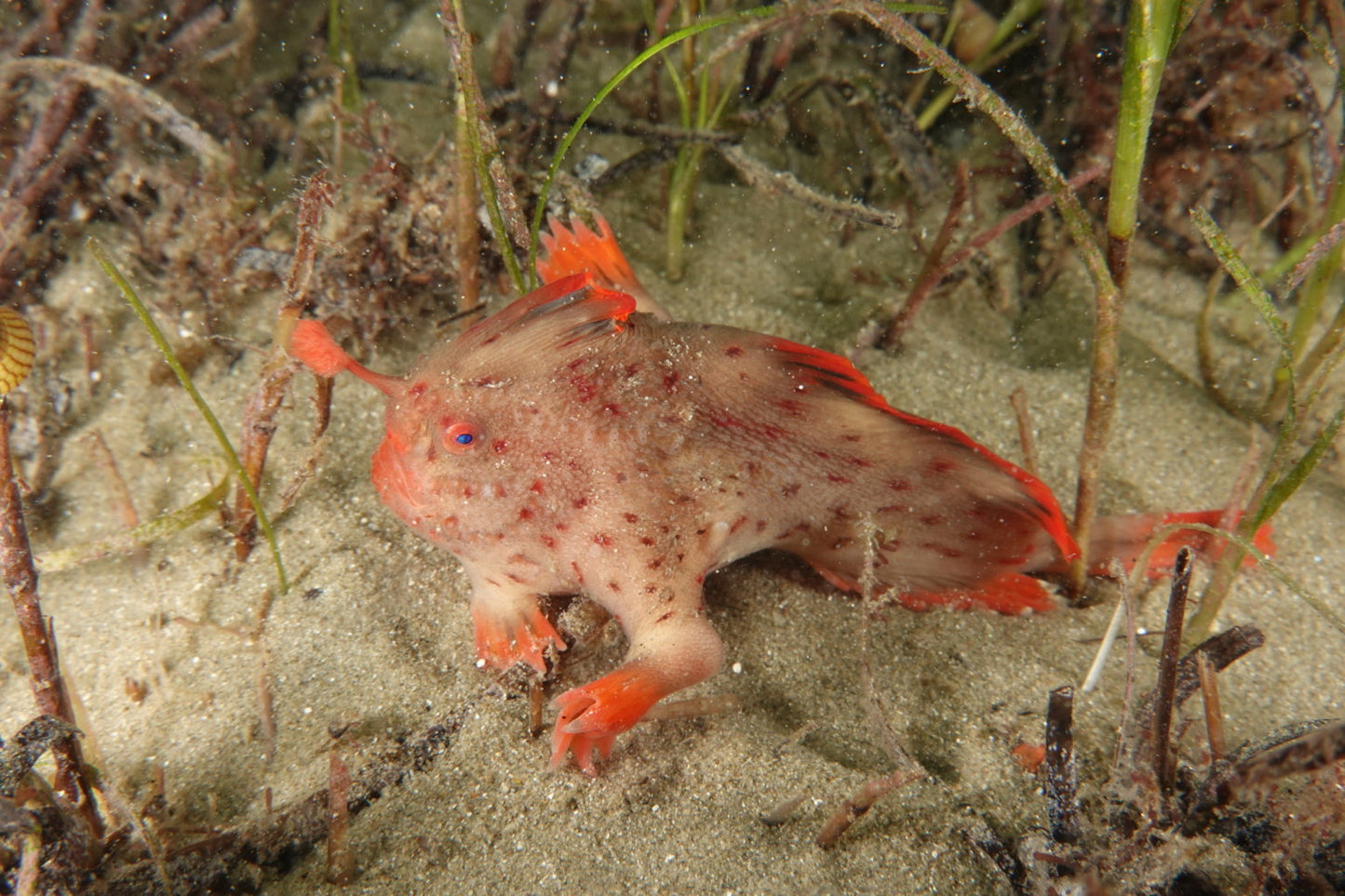Offer
Provide additional details about the offer you're running.

I know, I know.... What??
Very few have heard of them and even fewer have seen them in their natural habitat. Occupying just 2 small areas in the calm waters of Fredrick Henry Bay near Hobart, live the Red Handfish. They are one of the rarest and most endangered fish in the world. It is estimated that the wild population across these 2 areas is no more than 100. In the past, sightings of the fish have been made around Port Arthur (where they were first sighted in the 1800’s) and up the east coast, but none have been found in these locations in recent years.
There are 14 varieties of Handfish, 11 of which are found in Tasmanian waters with 3 being critically endangered, including the Red Handfish. The preferred habitat is sandy – rocky reefs that have sea grass and seaweed. They “walk” around using specially modified front fins searching for small crustaceans and worms to feeds on. When these fish were first observed it looked like they were walking around on their hands, thus the name - Handfish.
They are very small, only 5-10cm long and are partly camouflaged, easily blending into the environment except for the bright flashes of red along the body. Handfish are a type of anglerfish. The most well known anglerfish is the deep sea predator depicted in the kids movie Finding Nemo, that uses a small fluorescent light to attract prey. Unlike many anglerfish however, the Red Handfish does not use its front filament or illicium to attract prey.
The main conservation issue confronting the Handfish of Tasmania is the reduced abundance and distribution of sea grass and algae that it attaches eggs to when spawning. This is due to habitat destruction and the introduction of the northern Pacific sea star. There has also been an increase in the number of native sea urchins due to reduced numbers of lobster. Both introduced sea stars and native urchins feed on the spawning material. Habitat for Handfish is also usually found close to urban environments which are impacted by increased siltation, boat anchoring, warming waters and pollution.
There are many marine species in Tasmania that are endangered due the way we have transformed their habitat. Due to the small size and difficulty finding and researching these creatures, little is really known about the true numbers and condition of populations. For those interested, you can check out online and donate to the Handfish Conservation Project to help these little creatures battle against possible extinction through various conservation projects and captive breeding programs.
At Fun Tassie Tours we always try to incorporate some learning experiences into our tour and increase the public awareness on conservation issues like this one and many others.